INHIBITING SPLEEN TYROSINE KINASE MAY HELP LIMIT IMMUNE-MEDIATED PLATELET DESTRUCTION
TAVALISSE IS THE FIRST AND ONLY AGENT THAT TARGETS SPLEEN TYROSINE KINASE (SYK) IN MACROPHAGES TO INHIBIT DOWNSTREAM SIGNALING in chronic ITP1,2
(SCROLL DOWN TO SEE THE STEPS)
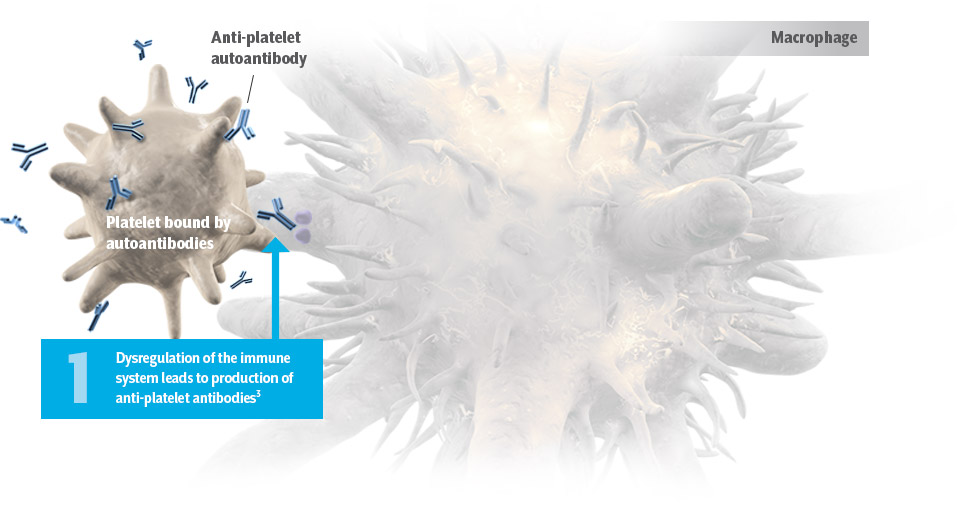
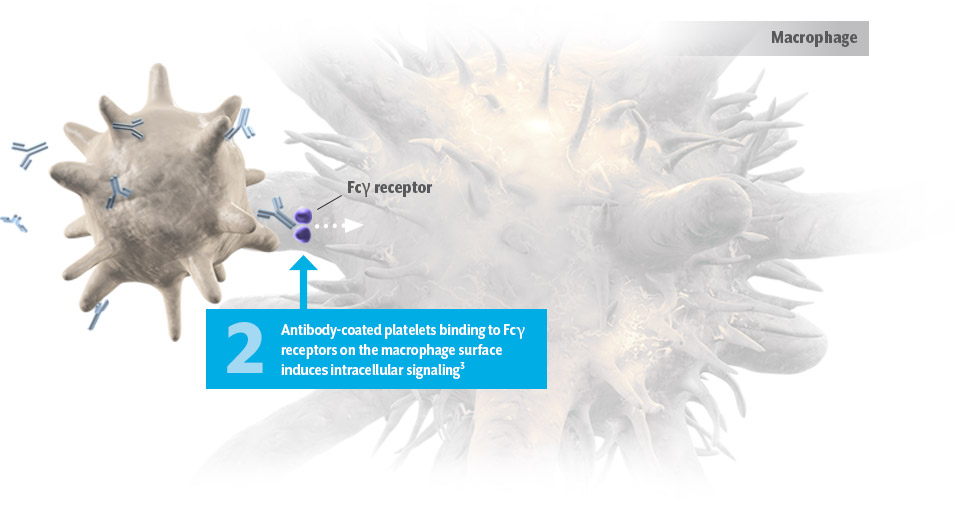
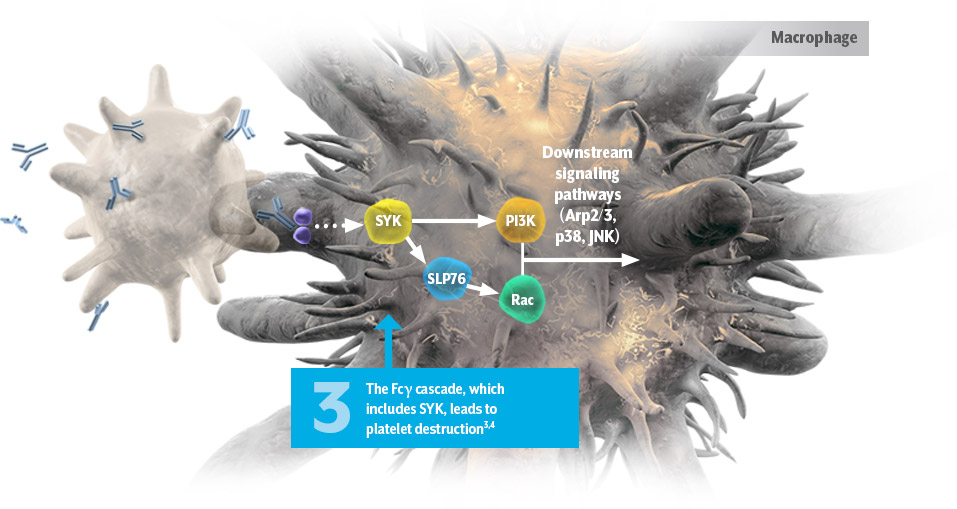
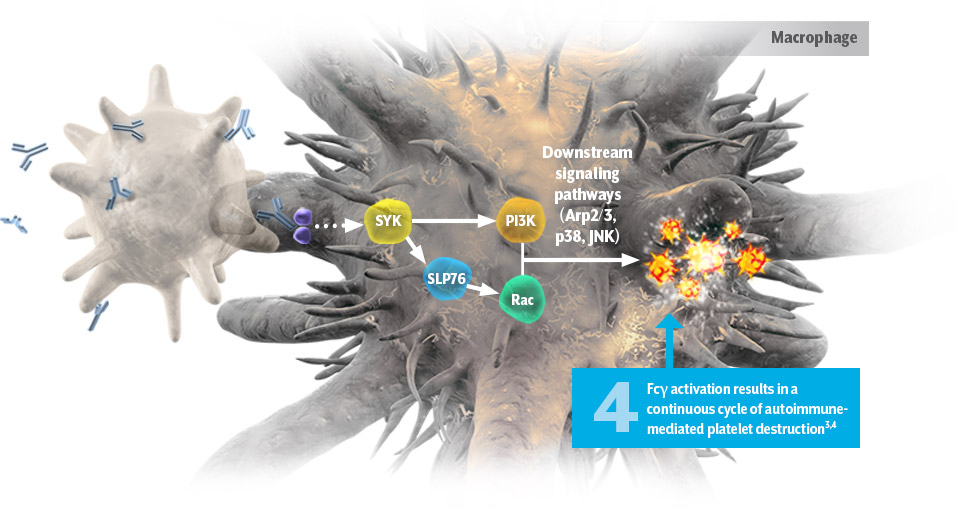
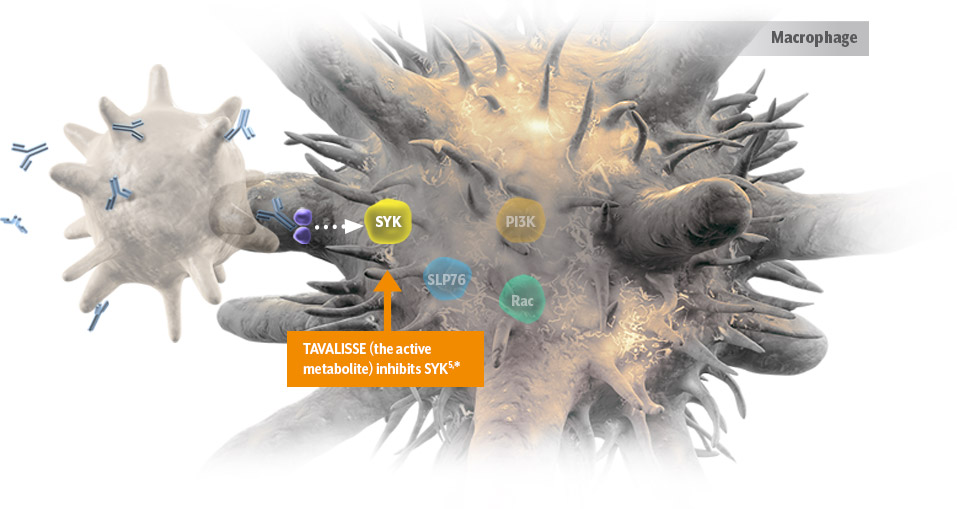
*The active metabolite of TAVALISSE is R406.
References: 1. Newland A, Lee E, McDonald V, et al. Fostamatinib for persistent/chronic adult immune thrombocytopenia. Immunotherapy. 2018;10(1):9-25. 2. Bussel J, Arnold DM, Grossbard E, et al. Fostamatinib for the treatment of adult persistent and chronic immune thrombocytopenia: results of two phase 3, randomized, placebo-controlled trials. Am J Hematol. 2018;93(7):921-930. 3. Shih A, Nazi I, Kelton JG, Arnold DM. Novel treatments for immune thrombocytopenia. Presse Med. 2014;43:e87-e95. 4. Nimmerjahn F, Ravetch J. Fc receptors as regulators of immune responses. Nature. 2008;8:34-47. 5. TAVALISSE® [package insert]. South San Francisco, CA: Rigel Pharmaceuticals, Inc.; April 2018.
